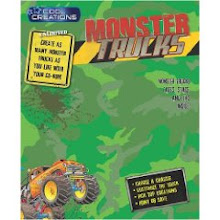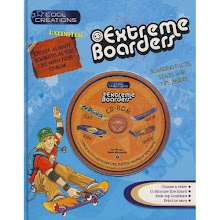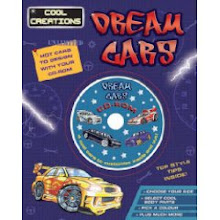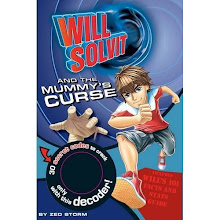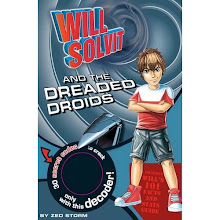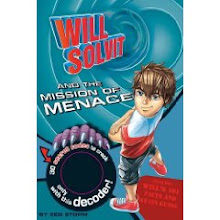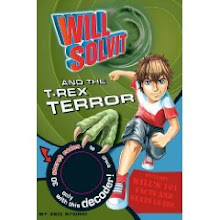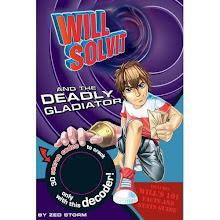Sketching is my favorite part of the creative process and often I prefer looking at sketch work by other artists rather than the final article. Sketches rarely get seen, at least in a commercial sense, this is one reason why I like looking at other artists concept art and sketchbooks so much but also it's an insight into how they work.
My enthusiasm for sketching also stems from working commercially with clients and bringing their ideas to life.
This post will focus on as small selection of my sketch work, some of it worked into an illustration.
Sketching for illustration

A selection of sketches from a recent project. The turn around was fairly quick so I usually just work without reference and look up specific items as I need them. A positive aspect of working to tight deadlines is that it forces me to work at improving my accuracy under pressure.

Here's a selection of 'vehicle' sketches from numerous commissions. These sketches were from a comic strip and are actually quite small in real life, less than A6 in size, I once worked with a guy who did all his story-boarding on post-it-notes (the very small ones!) he was sickeningly talented!

This is an example of pushed perspective, to give an element of warping it helps make the cars look like they are speeding. I have the final piece on this site so have a flick through the older posts.

This is a sketch I produced for Egmont publishing, a technique I employed to add more action into the composition was to draw the cars racing around a corner, oh and I've used a tunnel in the shot again (this is a great way to avoid drawing more road / scenery!)... and yes I do make car and explosion noises when I'm drawing at home!
Some transitions to final art

This is a recent job for a client showing a sketch > worked up into colour rough > then to the final illustration. It took roughly 2hrs, including the sketching stages, to produce as this was quite a cheap commission and I tend not to hang around on these jobs. I suppose like everything you have to strike a balance between quality of work and speed produced.

Here is another commission worked into a final illustration showing the development stages. The brief said "Character imagining a Space station lab with scientists growing plants" so I went for a retro/future environment.

Here is another job, it's from a range of 12 illustrations for an educational book, again showing the transition from my origional sketch.
Below are some examples of sketches for production and basic interface design

Here are a few product concepts I created for a client. The exercise was just to give them some direction but I still needed to work within some confines, such as the dimensions of the internal components, so the item can function properly, and limitations of the vacuum molding process where certain shapes would double or triple the cost of manufacturing the unit.

These are a few quick layout sketches / colour roughs they are environments used in a children's book. I usually try my best to visualize in three dimensions, which helps with environment designs.

While consulting for a publishing house I created this interface for a CD-ROM project so the user can navigate features in a more interesting way. The concept I created was to customize your surf / skate / snow board using a screen made to look like a desk in workshop, that way the board would be created as if it sat on the desk rather than over a generic options screen. The final artwork appeared virtually unchanged from the design I sketched during the meeting.

This example shows a quick b/w sketch and another finished interface illustration.
Often I sketch using a Wacom tablet in the same way that I'd use felt markers and a biro for sketching. This is a quick way for me to bypass scanning artwork if an idea is needed in a hurry.

Here's another visual I created using the Wacom rather than sketching on paper first. Using a Wacom tablet gives a slightly different line to pencil or pen, partly because you cannot move the orientation of the 'paper' on the computer screen to allow for directional pencil marks (although in later versions of Corel Painter you can)

I produced these sketches during a meeting while I acted as consultant for a production company, the example shows how I worked up an idea and how it translated to final art. We needed the island to have 4 sections for each board sport; naturally it is not geographically correct (snow right next to a hot beach!!?) but it serves it's purpose as a navigation tool. At the bottom is another idea for a separate interface, which was not used.... I imagine I've probably got through a fair amount of paper over the years going through the 'unused ideas' stage, but that's part of the fun!
Changing art Styles

The above layout shows five styles I submitted during the course of one project.
Although these examples are not sketching in the literal sense of the word, being able to offer variations in style during the early stages of a project is another part of production I enjoy. Sketching helps develop ideas but even the final style of the artwork is open to the same degree of fine tuning.
I work in many styles, whatever will please the customer mainly, although most of what you see on this site is commercial work so I don't really have any hang-ups about sticking to one style, I'm happy to produce whatever my customer wants and that is perhaps one of the most important things you can do as a practicing illustrator.


